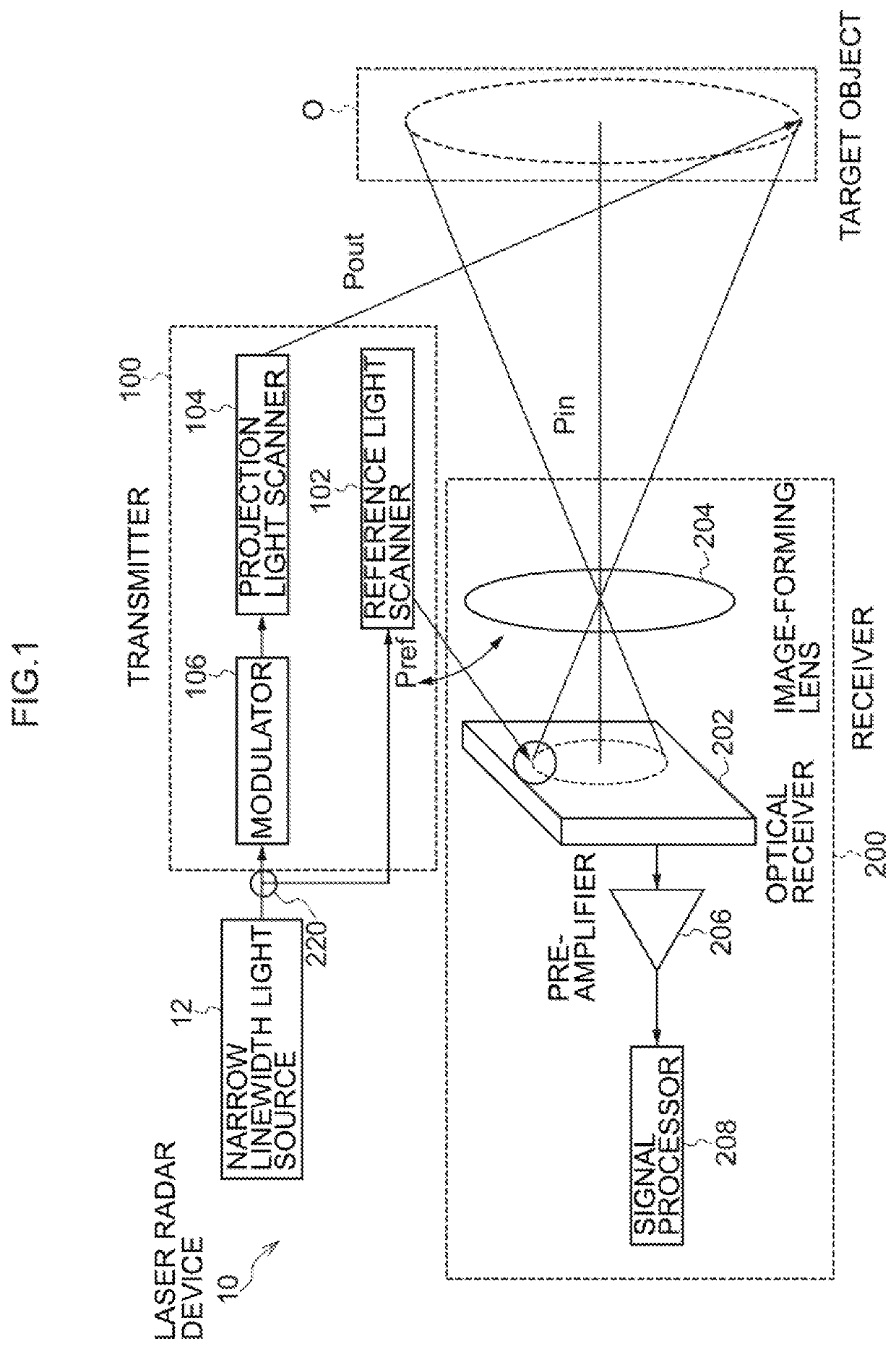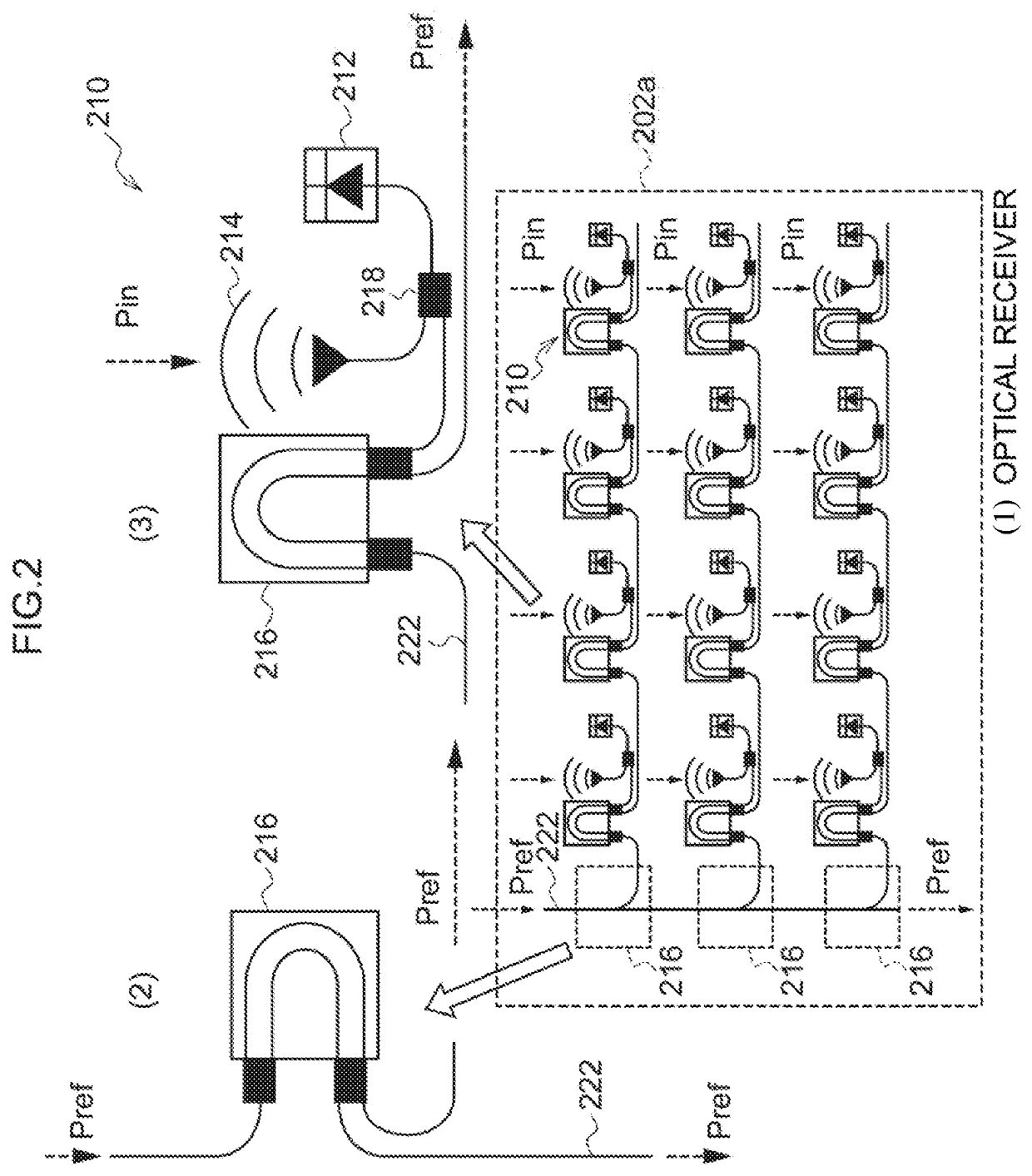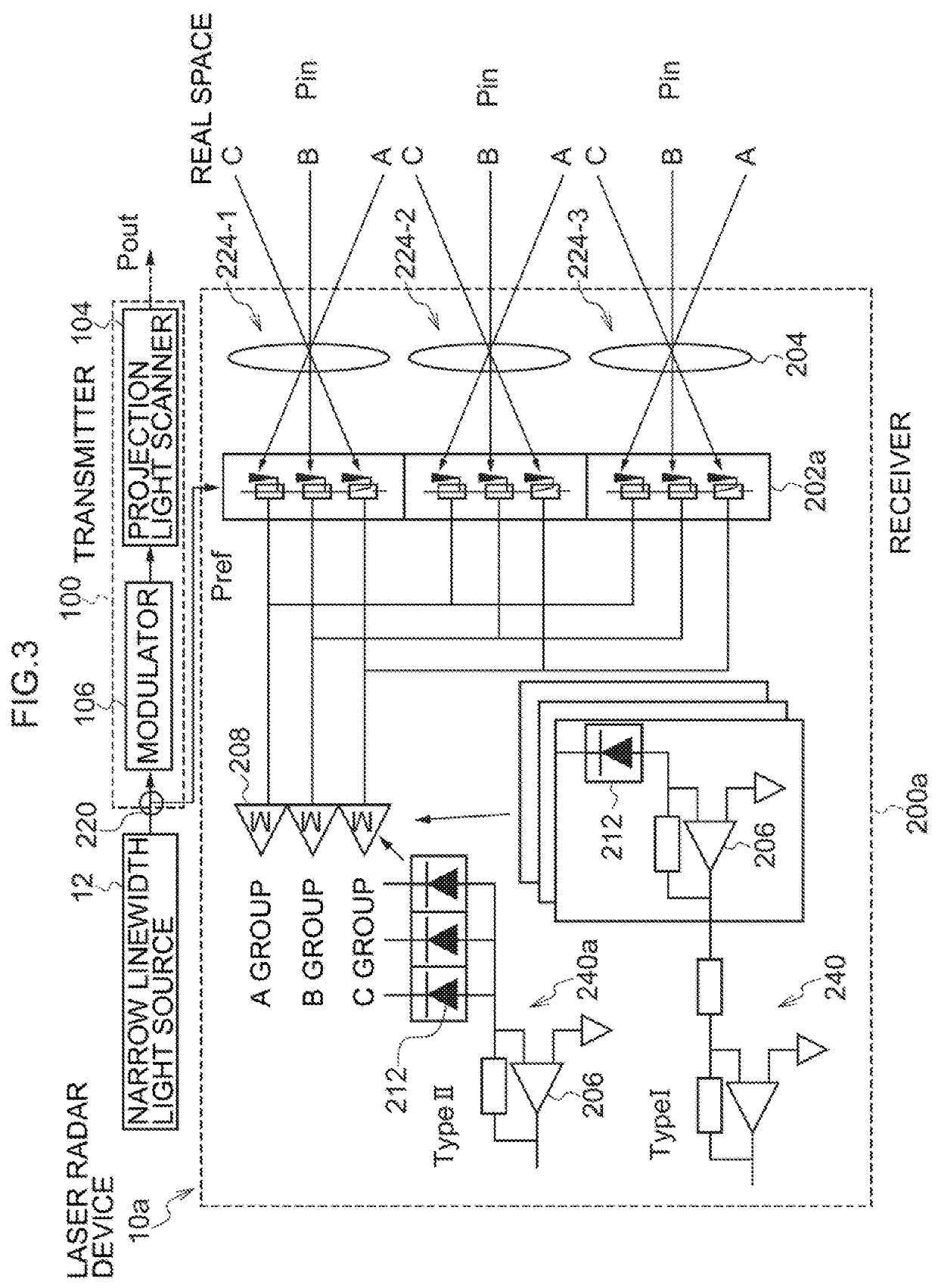Laser radar, and light receiving method of laser radar
a laser radar and laser radar technology, applied in the direction of measuring devices, using reradiation, instruments, etc., can solve the problems of reducing reception sensitivity, prone to reliability, and device not directly contributing to enhancing reception sensitivity, so as to achieve high sensitivity measurement
- Summary
- Abstract
- Description
- Claims
- Application Information
AI Technical Summary
Benefits of technology
Problems solved by technology
Method used
Image
Examples
first exemplary embodiment
[0049]Explanation follows regarding a laser radar device 10a according to an exemplary embodiment, with reference to FIG. 2 to FIG. 4.
[0050]First, explanation follows regarding an optical receiver 202a according to the present exemplary embodiment, with reference to FIG. 2. As illustrated in (1) of FIG. 2, the optical receiver 202a includes plural of the unit optical reception sections 210 disposed in an array. The number of the unit optical reception sections 210 that configure the optical receiver 202a is, as an example, 50×50=2500 units. However, only 3×4=12 units thereof are illustrated in (1) of FIG. 2.
[0051]As illustrated in (1) of FIG. 2, the reference light Pref incident from one end of an optical waveguide 222 is switching controlled between guiding and not guiding by an optical switch 216 illustrated in (2) of FIG. 2, and is distributed to the respective unit optical reception sections 210. Reception light Pin corresponding to each portion of the target object O is inciden...
second exemplary embodiment
[0064]Explanation follows regarding the laser radar device 10 according to the present exemplary embodiment, with reference to FIG. 5. The present exemplary embodiment is a mode that employs an optical receiver 202b as the optical receiver 202 of the laser radar device 10 illustrated in FIG. 1.
[0065]As illustrated in FIG. 5, the optical receiver 202b employs optical receivers 210a that are obtained by removing the optical switch 216 from the unit optical reception section 210 in place of the unit optical reception sections 210 of the optical receiver 202a illustrated in (1) of FIG. 2.
[0066]The optical receiver 202a illustrated in (1) of FIG. 2 is a mode that switches as to whether or not the reference light Pref is caused to be incident to each of the photodiodes 212; however, in the optical receiver 202b a mode is adopted in which the optical switches 216, disposed at a left end, switch as to whether or not the reference light Pref is caused to be incident to each of the arrayed ph...
third exemplary embodiment
[0068]Explanation follows regarding a laser radar device 10b according to an exemplary embodiment, with reference to FIG. 6 to FIG. 8. The present exemplary embodiment is a mode that employs an optical receiver 202c as the optical receiver 202, by employing a receiver 200b as the receiver 200 of the laser radar device 10 illustrated in FIG. 1.
[0069]As illustrated in (1) of FIG. 6, in place of the unit optical reception sections 210a of the optical receiver 202b illustrated in FIG. 5, the optical receiver 202c employs unit optical reception sections 210b that each integrate together a photodiode (PD) and a transimpedance amplifier (TIA) serving as a pre-amplifier. Configuration in which whether or not the reference light Pref is caused to be incident to the photodiodes PD is implemented by switching, using the optical switches 216 disposed at the left end of the optical receiver 202c in row units of the unit optical reception section 210b laid out in an array, is similar to that of t...
PUM
 Login to View More
Login to View More Abstract
Description
Claims
Application Information
 Login to View More
Login to View More - R&D
- Intellectual Property
- Life Sciences
- Materials
- Tech Scout
- Unparalleled Data Quality
- Higher Quality Content
- 60% Fewer Hallucinations
Browse by: Latest US Patents, China's latest patents, Technical Efficacy Thesaurus, Application Domain, Technology Topic, Popular Technical Reports.
© 2025 PatSnap. All rights reserved.Legal|Privacy policy|Modern Slavery Act Transparency Statement|Sitemap|About US| Contact US: help@patsnap.com



